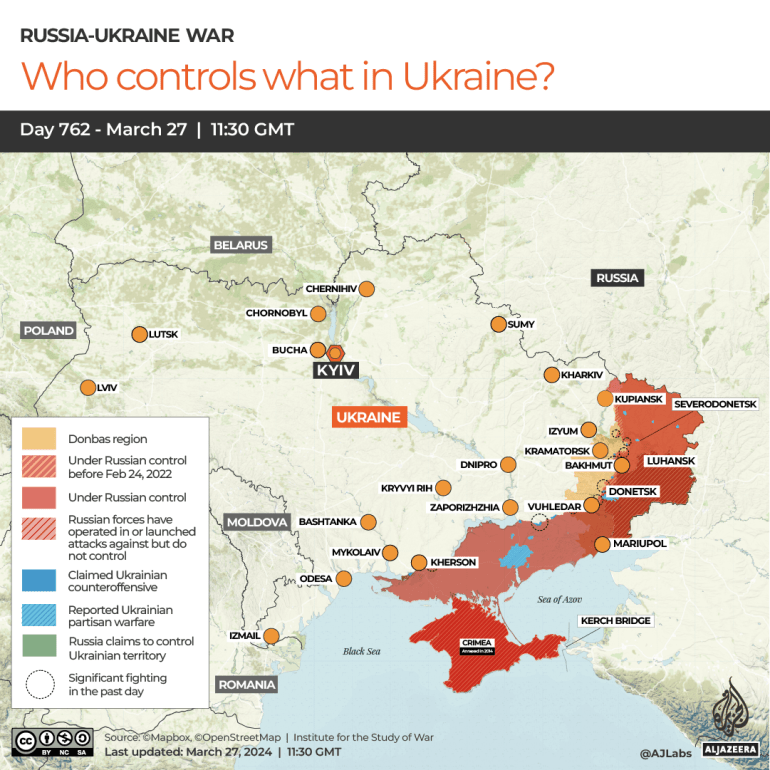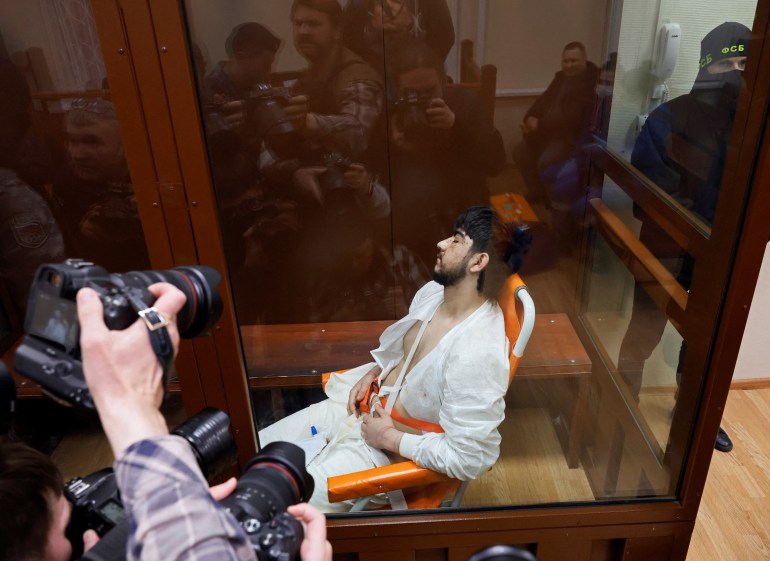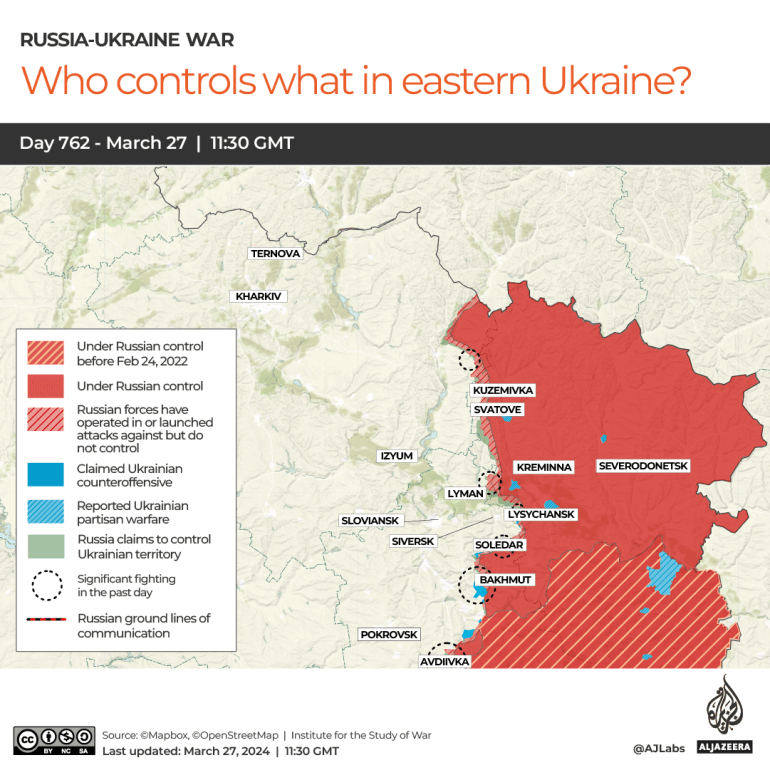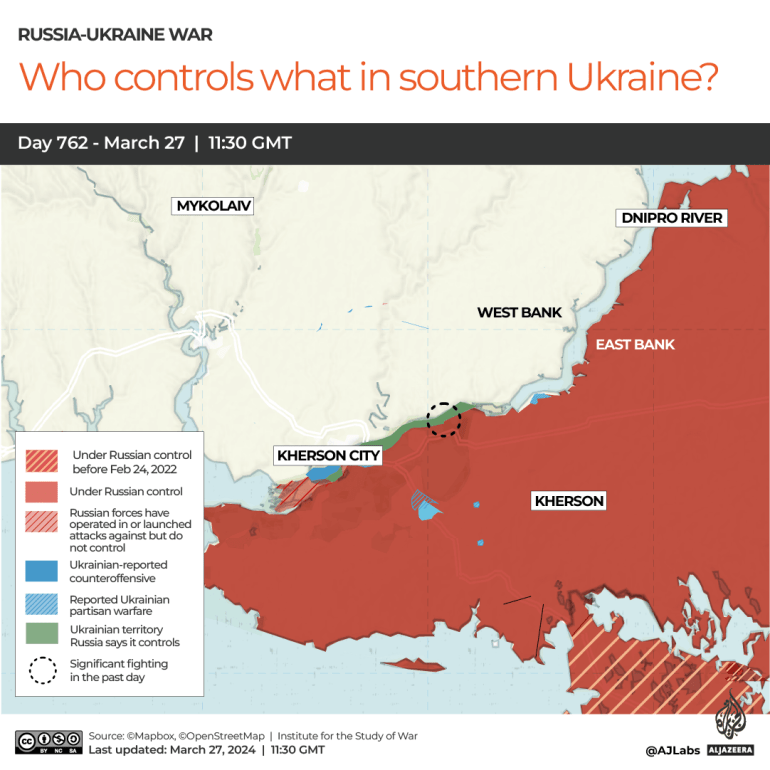The combination of a reported 40 Storm Shadow missiles, decoy missiles and drones damaged a communications centre, the Yamal and the Azov, two Ropucha-class landing ships, and other infrastructure, possibly including an oil depot.
The Yamal was especially badly damaged. Ukrainian military intelligence said it was listing to starboard with a large hole in its top deck two days later, and Russian crews had to keep pumping its bilges to keep the ship afloat. The damage to the Yamal and the Azov reportedly left Russia with just three of its landing ships operational, from an original fleet of 13 at the start of the war.
Ukrainian military intelligence coordinated a seaborne attack using Ukrainian Magura V5 surface drones to coincide with the aerial attack. The surface drones also struck the repair yard where the Yamal was moored, said deputy military intelligence chief Vadym Skibitskyi, and additionally damaged the Ivan Khurs reconnaissance ship.

Apart from the moral satisfaction of putting the Yamal out of action – it had taken part in the capture of Crimea in 2014 – Ukraine had a practical benefit.
Sevastopol is reportedly the only Black Sea facility capable of loading Kalibr ballistic missiles onto Russian submarines and ships, and strikes on the port have reduced the number of vessels carrying these missiles, which are particularly difficult to intercept.
Ukraine’s attack came a day after Russia launched a massive aerial attack on energy and other infrastructure in Ukraine, using 151 drones and missiles launched from both Russia and occupied Crimea.
Ukraine’s General Staff said their defences shot down 55 of the 63 Shahed drones used and 37 of the 88 missiles of various types. The remainder caused power and water outages that Ukrainian authorities said were later restored.
“Russian strikes on energy infrastructure … likely aim to collapse the energy grid in part to stall Ukrainian efforts to rapidly expand its [defence industrial base],” said the Institute for the Study of War, a Washington-based think tank.
Russia falls down on security at home
Russian strikes against Ukrainian infrastructure have also aimed to undermine Ukrainians’ sense of security and support for the war.
But on the day of Russia’s large-scale strike, it was Russian insecurity that was heightened. Four gunmen massacred at least 133 Russian civilians at the Crocus City Hall concert hall on the outskirts of Moscow. The Islamic State in Khorasan, a Taliban splinter group, later claimed responsibility.
Even so, Russian President Vladimir Putin and other public figures attempted to blame Ukraine for the attack.
“Who benefits from this?” asked Putin in a televised address on Monday. “This atrocity may be only a link in a whole series of attempts by those who have been fighting our country since 2014 at the hands of the neo-Nazi Kyiv regime. And the Nazis, as is well known, never disdained to use the most dirty and inhumane means to achieve their goals,” Putin said.
Russian authorities arrested four Tajik nationals they said were trying to escape to Ukraine in a van with a Ukrainian numberplate.

The explanation did not travel well outside Russia.
Belarus President Alexander Lukashenko said the van was possibly headed for his country as they were arrested on Russian territory adjacent to Belarus.
The US embassy in Moscow had issued a warning to avoid large gatherings on March 7, and Washington said its intelligence agencies had followed a duty to warn policy, passing on intelligence directly to Russian authorities.
Putin dismissed these and other warnings as “outright blackmail” and “an attempt to intimidate and destabilise our society” three days before the attack – meaning the failure to respond to intelligence came from the top.
“The terrorists’ car was stopped near Bryansk, which is in western Russia, and so vaguely near Ukraine, which means that the four Tajiks in a Renault were intending to cross the Ukrainian border, which means that they had Ukrainian backers, which means that it was a Ukrainian operation, which means that the Americans were behind it,” wrote Yale University history professor Timothy Snyder.
“The reasoning here leaves something to be desired. And the series of associations rests on no factual basis.”
Russians gunning for Chasiv Yar
Russian forces continued to make minor advances in Ukraine’s east during the past week.
They have taken the offensive initiative this year, and have been inching forward since the fall of Avdiivka on February 17.
On March 20, Ukrainian forces said they repelled a “massive” attack at the northern end of the front in Kharkiv that thrust towards Lyman. The assault left the Russian positions marginally ahead of where they had been a day earlier.
Further south, in the Donetsk region, Russian forces seemed to fix their sights on Chasiv Yar, west of Bakhmut, which fell last May. During the week they appeared to gradually swallow two settlements, Bohdanivka and Ivanivske, which lie northeast and southeast of Chasiv Yar, respectively.

Seizing Chasiv Yar “would be more operationally significant than the Russian seizure of Avdiivka”, said the Institute for the Study of War.
For a start, it would mean Ukrainian forces could no longer harass Russian logistics convoys in occupied territory east of Bakhmut and would have to bring artillery into harm’s way to disrupt Russian logistics closer to the front lines.
More importantly, Chasiv Yar would bring Russian forces much closer to their objective of capturing the last major urban centres of Donetsk – Konstyantynivka, Kramatorsk and Sloviansk – said the ISW.
“Available imagery, which ISW will not present or describe in greater detail at this time to preserve Ukrainian operational security, shows that Ukrainian forces have established significant fortifications in a ring shape in the Chasiv Yar area, and Russian forces will likely struggle to break through these defences at their current offensive tempo in the area,” said the ISW.
